Michael Hallett, Worcester, England
Michael Hallett is a professional image-maker and internationally published photo historian. He is involved with both communication and media; with both words and pictures and a lifetime in the theory and practice of art & design education.
He has extensive experience in higher education including what is now De Montfort University, the Arts University Bournemouth, Manchester Metropolitan University, Birmingham City University, and also as Visiting Professor at the Rochester Institute of Technology, New York.
He has written continuously in the photographic press for almost five decades, including his biography on Stefan Lorant, the ‘godfather of photojournalism’. As an historian he is concerned with the images of others, with Bullring: the heart of Birmingham and his extended visual essay on the Seaside, he is increasingly immersed in his own photography. His new book Olympic Coast is a more recent outcome from this.
Olympic Coast
With Olympic Coast he brings together his understanding of local history and heritage and links this with his photographs and the iconographic imagery he calls the ‘photo construction’. With Weymouth & Portland the sailing venue for the 2012 London Olympic Games it is as if the sporting world was coming to his own back yard. Olympic Coast is ‘a once in a lifetime opportunity’.
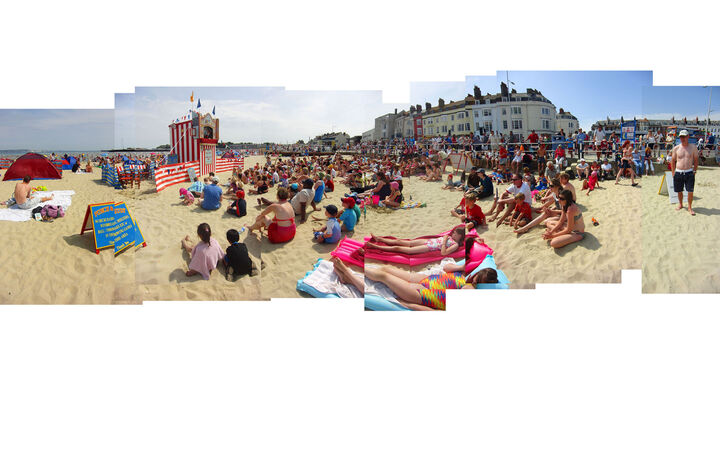
Photo construction
Michael Hallett challenges the concept of image making with the iconographic imagery he calls the ‘photo construction’. It was a sense of extreme frustration that led to his intellectual pursuit of how to extend the boundaries of time and space that a single exposure, single viewpoint photograph was unable to offer. The visual solution provides an innovative cutting edge to the new media technologies.
Individual photographic images were placed over one another in layers as distinct from stitching and merging the images into one another. Using compact digital cameras, a photo construction consisting of between 3 and 100 or more individual images gives an angle of view between 180 and 360 degrees. The photographer and viewer become surrounded by the landscape, with each construction offering a more involved sensation of what it was like to be there. These images see their subject from the inside looking out, extending an awareness of time and space.
This new Hong Kong series considers the 21st century relationship between ancient religions, modern commercial pressures, and people within their complex urban environment.
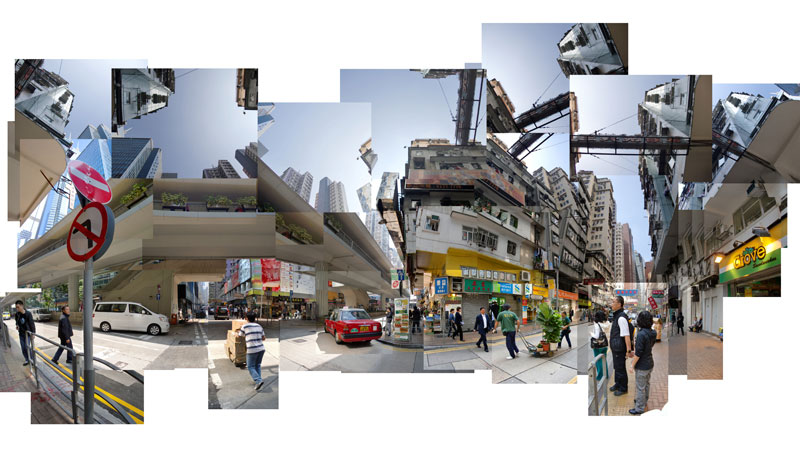
From the seaside series
Michael Hallett challenges the concept of image making with the iconographic imagery he calls the ‘photo construction’. It was a sense of extreme frustration that led to his intellectual pursuit of how to extend the boundaries of time and space that a single exposure, single viewpoint photograph was unable to offer. The visual solution provides an innovative cutting edge to the new media technologies.
Individual photographic images were placed over one another in layers as distinct from stitching and merging the images into one another. Using digital media, specifically Casio EX-P600, EX-P700 and EX-Z1000 cameras, a photo construction consisting of between 3 and 100 or more individual images gives an angle of view between 180 and 360 degrees. The photographer and viewer become surrounded by the landscape, with each construction offering a more involved sensation of what it was like to be there. These images see their subject from the inside looking out, extending an awareness of time and space.
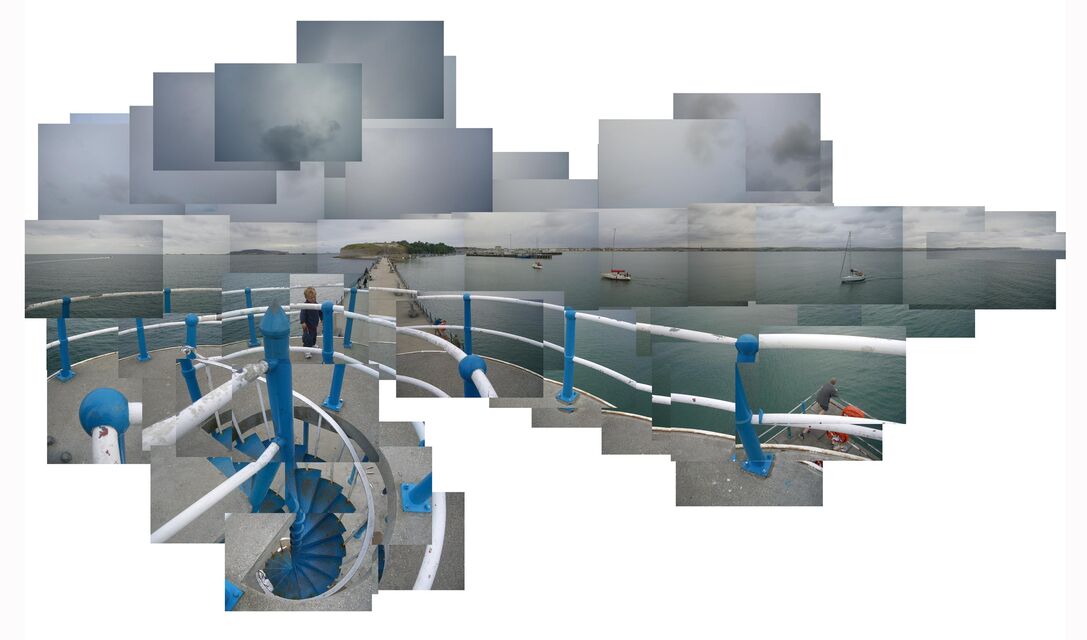
Images
“A photographer observes a subject and freezes it in a moment of time, in what Henri Cartier-Bresson called the ‘decisive moment’. The camera frames the picture and allows the viewer to see the image normally within a 50 to 55 degree angle of view. A panoramic construction consisting of between 5 and 62 or more individual images gives an angle of view between 180 and 360 degrees. The photographer and viewer become surrounded by the landscape with each panorama offering a more involved sensation of what it was like to be there.
A conventional photograph is viewed from the outside looking in. A panorama is seen from the inside looking out extending an awareness of time and space. Metaphorically the panoramic construction colours in what the single photograph can only see in black & white. It is the difference between being a voyeur or being a participant.”
Michael Hallett, Worcester, England; May 2004
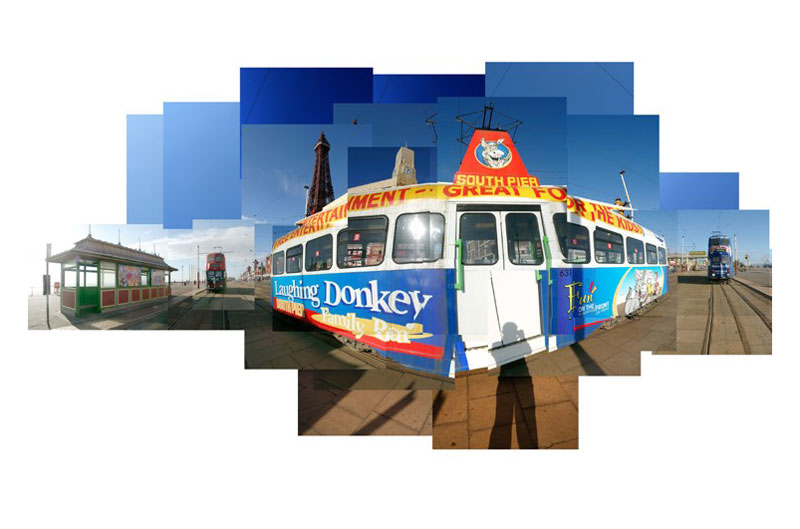
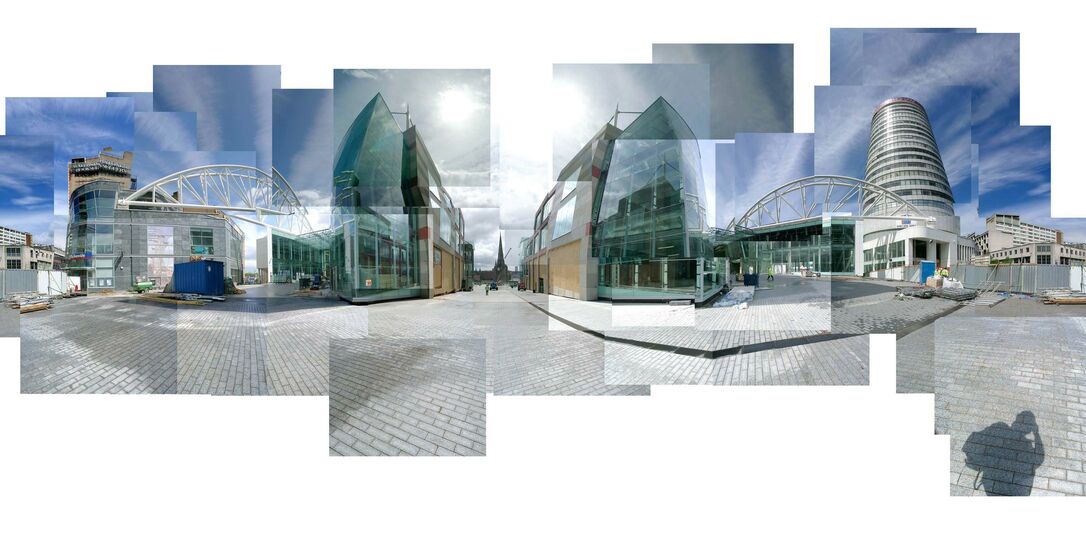
Books
Bullring: the heart of Birmingham, Tempus Publishing, 2003. (with Peter James).
Olympic Coast, Henwick Hill Press, 2012.








